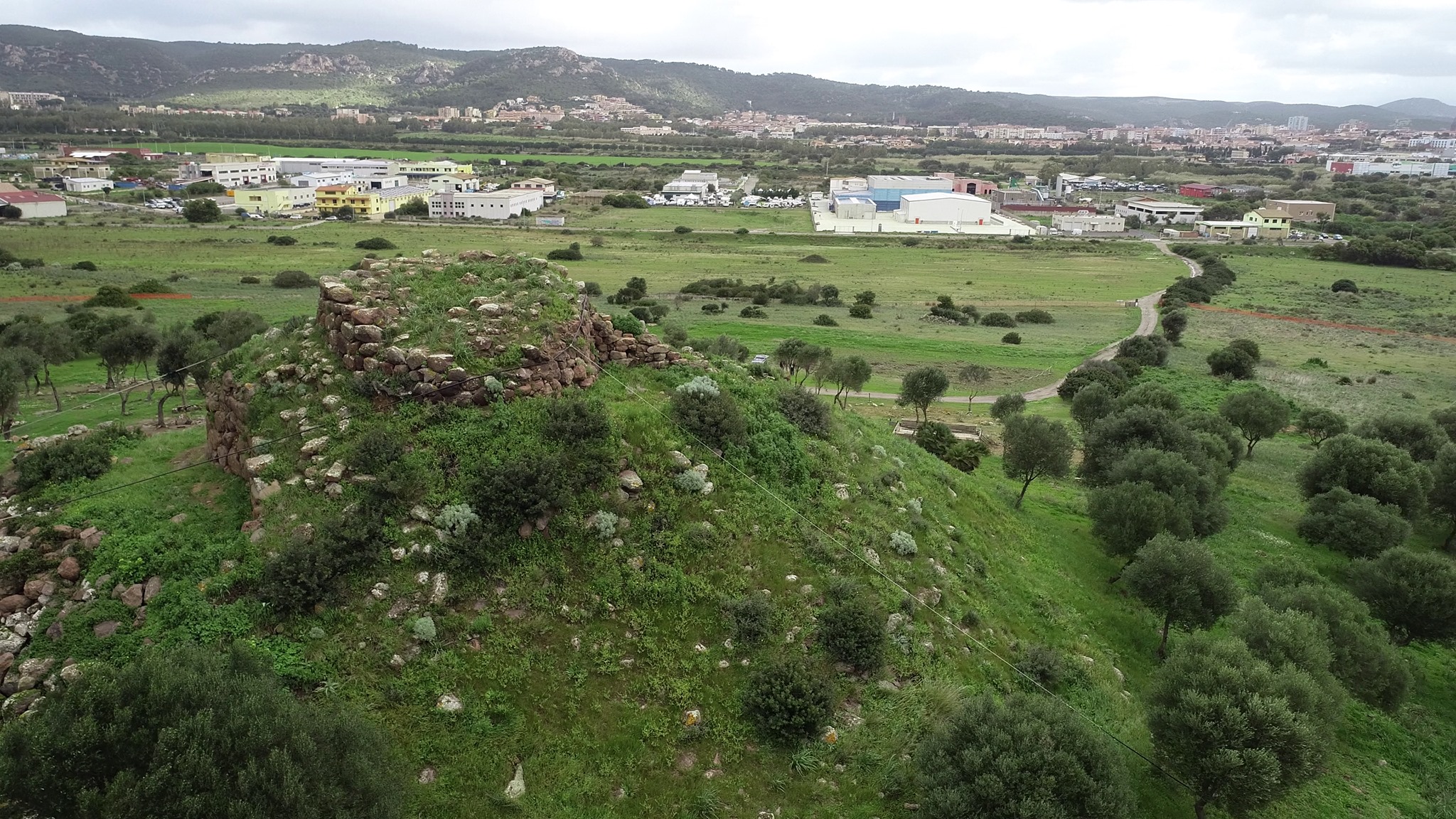The building consists of a main “tholos” surrounded by a quadrilobate bastion.
The towers of the latter are oriented according to the cardinal points and the keep is attached to the north tower of the bastion, while to the east there is a large courtyard.
The nuraghe and the adjacent village are surrounded by a fortified structure built probably in the last quarter of the 7th century BC.
The inner wall of the fortification uses the debris of the nuragic antemurale, identified for a length of about 60 m.
The structure, which has a thickness of about 6 m, is segmented into various blind rooms obtained in the space between the two curtain walls.
From an examination of the stonework visible on the surface, it seems possible to interpret the masonry as an embankment, in which the small rooms were functional to the creation of the fill of earth and stones.
In a phase prior to the last quarter of the 6th century BC, a projecting sector was built on the embankment, with rooms extending longitudinally, which may have also had a residential function.
In the inner part of the antemurale, curvilinear masonry structures interpreted as huts have been identified, and their period of use still remains to be clarified.
The structure was presumably abandoned shortly after the conquest of Sardinia by Carthage, in the last quarter of the 6th century BC.
The settlement holds great historical importance because it constitutes a rare example of Phoenician fortification attached to a nuragic complex.
This circumstance is even more extraordinary when compared to the chronology of other known Phoenician and Punic fortifications in Sardinia, which all date back to the Carthaginian period.
The continuation of investigations could be of great help in understanding more deeply the relationships between the nuragic community residing in the village and the Phoenicians who presumably arrived there around the middle of the 8th century BC. (Sardegna Cultura)
The photos of the nuragic complex of Monte Sirai are by: Andrea Mura-Nuragando Sardegna, Gonnesa Archeologica, Massimiliano Piras, Diversamente Sardi, and unidentified author.








